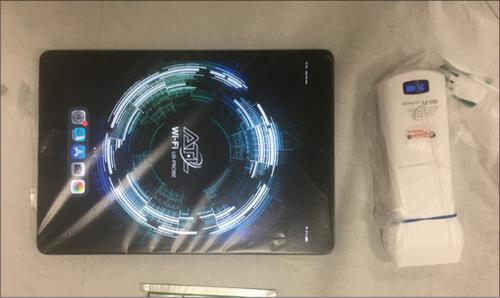当前位置:
X-MOL 学术
›
Lancet Respir. Med.
›
论文详情
Our official English website, www.x-mol.net, welcomes your
feedback! (Note: you will need to create a separate account there.)
COVID-19 outbreak: less stethoscope, more ultrasound.
The Lancet Respiratory Medicine ( IF 38.7 ) Pub Date : 2020-03-20 , DOI: 10.1016/s2213-2600(20)30120-x Danilo Buonsenso 1 , Davide Pata 2 , Antonio Chiaretti 3
The Lancet Respiratory Medicine ( IF 38.7 ) Pub Date : 2020-03-20 , DOI: 10.1016/s2213-2600(20)30120-x Danilo Buonsenso 1 , Davide Pata 2 , Antonio Chiaretti 3
Affiliation

|
In their Correspondence in The Lancet Respiratory Medicine, Jonathan Cheung and colleagues stressed the need to ensure staff safety in the airway management of patients with 2019 novel coronavirus disease (COVID-19). This safety should be guaranteed from the patient's first assessment. In fact, maintaining the safety of the doctor, who meets many people during his daily activity, avoids the spread of the disease to other patients and the possible creation of new epidemic outbreaks. However, patients with fever and respiratory symptoms do still need to be seen. The standard method involves doing an objective examination and carrying out any radiological tests, such as chest radiography or chest CT. This means the use of tools such as a stethoscope and radiological devices, with the possibility of contamination of the medical devices and nosocomial spreading of the virus; eventually, this can cause the contagion of health-care workers (from doctor to nurse to radiology technicians) and already hospitalised patients who have a higher risk of developing severe COVID-19.
中文翻译:

COVID-19爆发:减少听诊器,增加超声检查。
在《柳叶刀》呼吸医学杂志中的通讯Jonathan Cheung及其同事强调了在2019年新型冠状病毒病(COVID-19)患者的气道管理中需要确保人员安全。应该从患者的首次评估中保证这种安全性。实际上,在日常活动中与许多人会面的医生保持安全,可以避免疾病向其他患者的传播以及避免新的流行病爆发。但是,仍然需要观察有发烧和呼吸道症状的患者。标准方法包括进行客观检查并进行任何放射学检查,例如胸部X光检查或胸部CT。这意味着使用诸如听诊器和放射设备之类的工具,可能会污染医疗设备并在医院内传播病毒;最终,
更新日期:2020-03-21
中文翻译:

COVID-19爆发:减少听诊器,增加超声检查。
在《柳叶刀》呼吸医学杂志中的通讯Jonathan Cheung及其同事强调了在2019年新型冠状病毒病(COVID-19)患者的气道管理中需要确保人员安全。应该从患者的首次评估中保证这种安全性。实际上,在日常活动中与许多人会面的医生保持安全,可以避免疾病向其他患者的传播以及避免新的流行病爆发。但是,仍然需要观察有发烧和呼吸道症状的患者。标准方法包括进行客观检查并进行任何放射学检查,例如胸部X光检查或胸部CT。这意味着使用诸如听诊器和放射设备之类的工具,可能会污染医疗设备并在医院内传播病毒;最终,











































 京公网安备 11010802027423号
京公网安备 11010802027423号